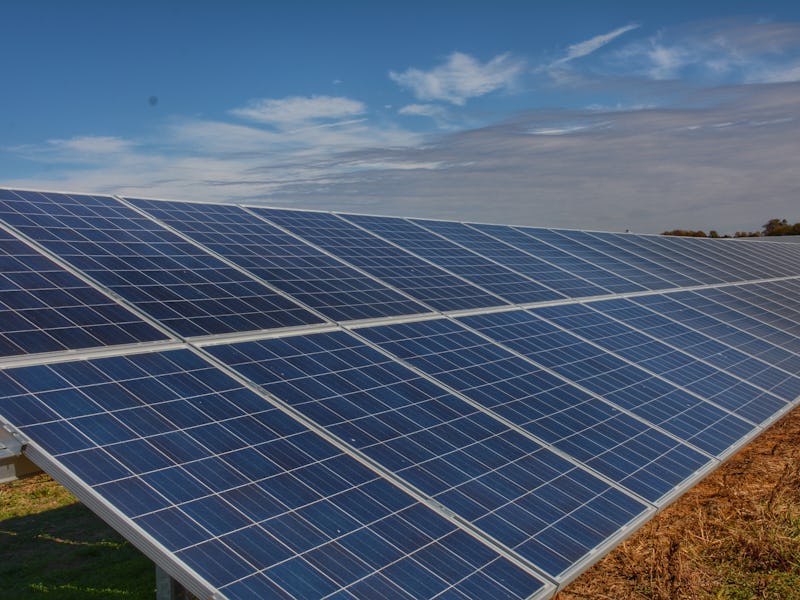Solar Panels on the Border Wall Won't Work, Says Govt. Official
Installing solar panels on the wall wouldn't be impressive.

President Donald Trump suggested last week that his 2,000-mile-long wall project at the border of Mexico could be covered with solar panels as a way to offset the cost of the wall. However, the director of the U.S. Department of Energy’s solar energy program calls it a small fraction of the solar that will be installed in the U.S.
In a closed meeting with Republican Congressional leaders on June 6, Trump told them that his vision for the border wall was that it would be 40-50 feet high and covered with solar panels so they would be “beautiful structures,” reports Axios. He stressed that generating electricity would be a way for the wall to pay for itself.
Putting solar panels on the wall might be a way to get the wall to eventually pay for itself, but it doesn’t represent a large or particularly useful investment in solar energy, Charlie Gay, the Solar Energy Technologies Office Director for the Department of Energy tells Inverse. Because of the amount of solar that is expected to be installed in the U.S. over the next five years and the cost of the wall, the solar that would be installed along the border wall is minimally useful. And when placed in context of worldwide solar energy it is a very small gesture.
“The amount of solar, I think based on those projections was about a gigawatt of solar, depending on whose design you follow,” says Gay. The upper bounds of the projections suggest the wall could have about 1.4 gigawatts of solar installed along it. “That would still be basically a small fraction of solar installed across the U.S,” he says.
There are a few proposed designs for putting solar panels on the wall. In the submitted designs, Gleason Partners puts solar panels on top of a concrete structure, and Sustainable Technology LLC places them above a 30-foot high chainlink fence. Bruce Blakeman of Sustainable Technology LLC told Fox Business that there is a rumor that Trump became interested in putting solar panels on the wall after seeing Sustainable Technology’s initial design on Fox Business News. However, while the solar designs help with the cost, even financing it with government bonds isn’t quite enough. “It won’t pay for all of it, but it will pay for a substantial part,” Blakeman says.
Right now, solar is about $1.00 per watt to install, so it would cost between $3 billion to $4 billion to install on top of the $21.6 billion wall. Projections suggest the installation could make about $15.8 billion in 40 years at which point the panels will probably need to be replaced. And since the wall itself is so expensive, it defeats the financial purpose of installing the panels in the first place. If losing the wall means that the government doesn’t install a gigawatt of solar, we don’t exactly lose much.
“To give you a sense of scale, last year, fourteen and a half gigawatts of solar were installed in the United States,” says Gay. When you look at a gigawatt along the proposed wall, it isn’t a major increase to the total solar of the country. Including fossil fuels, the U.S. produces about 4 billion gigawatt hours of energy a year. It’s estimated that the Gleason gigawatt solar installation can produce maybe 8,000 gigawatt hours in a year and Sustainable Technology’s design will produce about 2,000 gigawatt hours a year.
Growth in solar is happening at an incredible rate. There are 44.7 gigawatts of solar installed in the U.S. right now, and it makes up about two percent of our net energy production. Even without the gigawatt from Trump’s wall, the solar industry expects that we will hit 100 gigawatts installed by 2021. Adding a gigawatt is useful, but compared to where the U.S. is in solar installation it isn’t actually a ton of energy, says Gay. “And [it’s] a very small fraction of the total amount of 80 gigawatts we expect to be installed around the world this year.”
Correction, June 19: An earlier version of this article mischaracterized Charlie Gay’s comments as being anti-solar for the proposed wall.